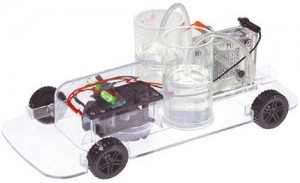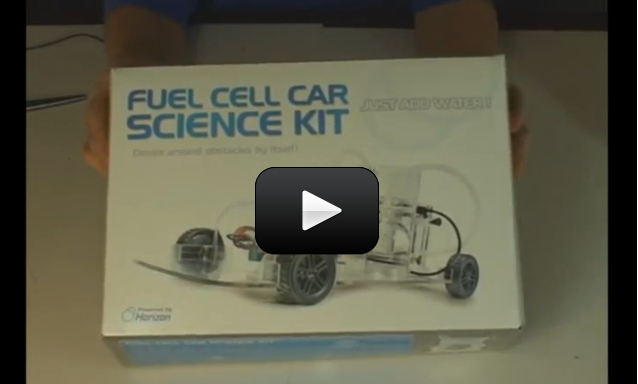 This project is for advanced students. We’re going to build a car that runs entirely on sunlight and water. Use energy from the sun, we’ll first use a solar cell to convert sunlight into electricity.
This project is for advanced students. We’re going to build a car that runs entirely on sunlight and water. Use energy from the sun, we’ll first use a solar cell to convert sunlight into electricity.
Then we’ll use that electricity to split the water molecule (H2O) into hydrogen and oxygen atoms and store them in separate tanks.
Lastly, we’ll flip the system around to allow the hydrogen and oxygen gases to mix, which will produce the power to run the car and create an exhaust product that’s just plain water.
How does that sound?
Please login or register to read the rest of this content.


When I ran it on battery power, it was like it had a mind of its own! Thanks
Yes it should be fine… good job catching it!
We put regular water in it! Did we ruin it? We just drained it out. It was only in there for 5 minutes or so. Can we proceed once we get some distilled water? Thanks!
To understand the process of water breaking into its constituent elements we need to take a look at the charges of hydrogen and oxygen. The periodic table lists hydrogen as having a +1 charge and oxygen as having a -2 charge..so 2*(+1)+(-2)=0 charge…this nonexistent charge allows for a water molecule to be stable. When water is broken down, it is changed into its original state of two hydrogens (+1) and an oxygen (-2). The reason why water is broken down completely by input of energy is because the hydrogens and oxygen are held together by relatively weak covalent bonds. This weak bond allows for hydrogens and oxygen to separate completely with their charges intact.
As is not answered in the link you posted, why does the PEM fuel cell convert the H2O into positive hydrogen ions and negative oxygen ions instead of positive ions and negative hydroxide? I have taken chemistry, and am on the molecular section of biology. So what is different in this reaction that causes the oxygen molecule to become its own ion instead of ‘keeping’ a hydrogen molecule with it?
The video with this experiment describes how the PEM works, and you’ll find info on how the solar cell works here:
https://www.sciencelearningspace2.com/2010/05/reading-about-fuel-cells-hydro-power-and-solar-robots/
Hope this helps!
Aurora
I need to know how this thing works to put in a esay on nuclear power vs water fuel cell
cool